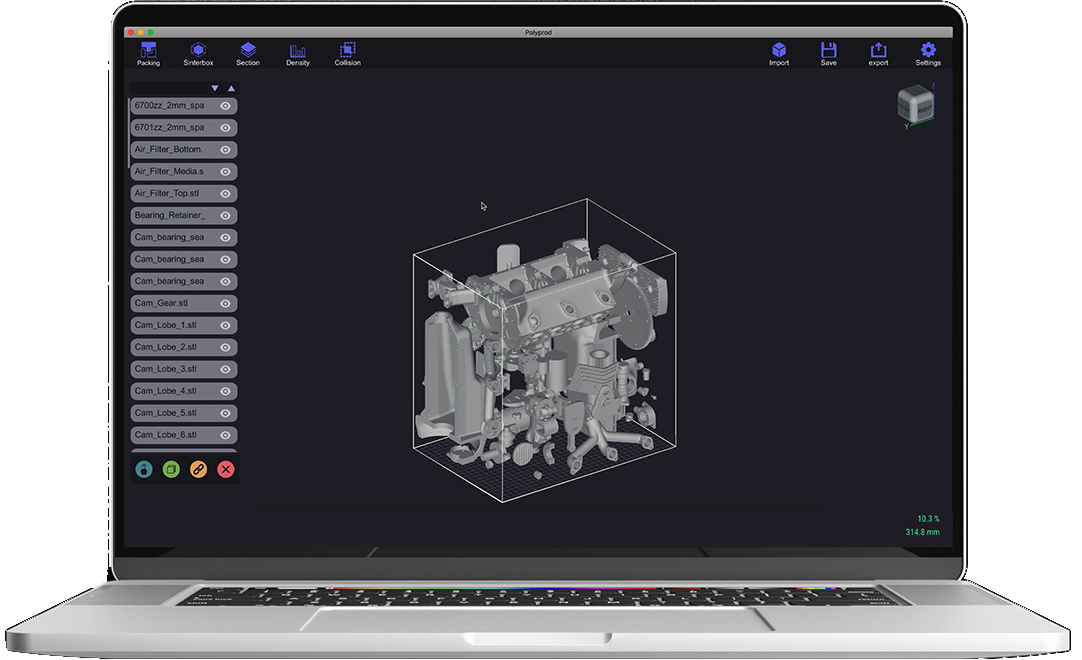Comlete guide to start using polyprod
Polyprod is developed with a very simple UI for a very nice user experience. This guide is a cheat sheet that reminds you how to use each tool and feature available in polyprod. Let's get started!

1. How to mport file, which file extension is better for 3D printing
With polypod, you can use many kinds of files such as STL, OBJ, or 3MF.
These file extensions are based on an explicit format.
Each of these files has their pro and cons :
Stl: The most popular, it's well compressed, compatible with almost every 3D software.
Obj: Very useful if you work with texture or material.
3mf: Very useful for 3d printing, you can store many separate parts in a single file
2. How to merge small part within a sinterbox
Sinterbox is a powerful tool that will make you save lots of time. You can compact your small parts into a box with holes in seconds. This feature will help you during the cleaning step of your part. When cleaned you just have to break the tinderbox.
3. How to use 3D neasting for a perfect print
Automatic 3D nesting is a must-have when you want to run SLS 3D printing job. It will help you to decrease the printing volume, decrease the print time and save your own time. You can also use packing constraints to have a better print result
4. How to Check print density for each layer
Measuring the density of the layer is a good way to determine the heat repartition in your print. Big density variation it's also a good indicator that your packing is not optimal. Having a linear density during all the print will increase your overall print quality
4. How to check part collision within a print job
missing a collision in your print job can be a nightmare. With this tool, you will get notified if any collision between parts occured. Avoiding collision will save you many time and money